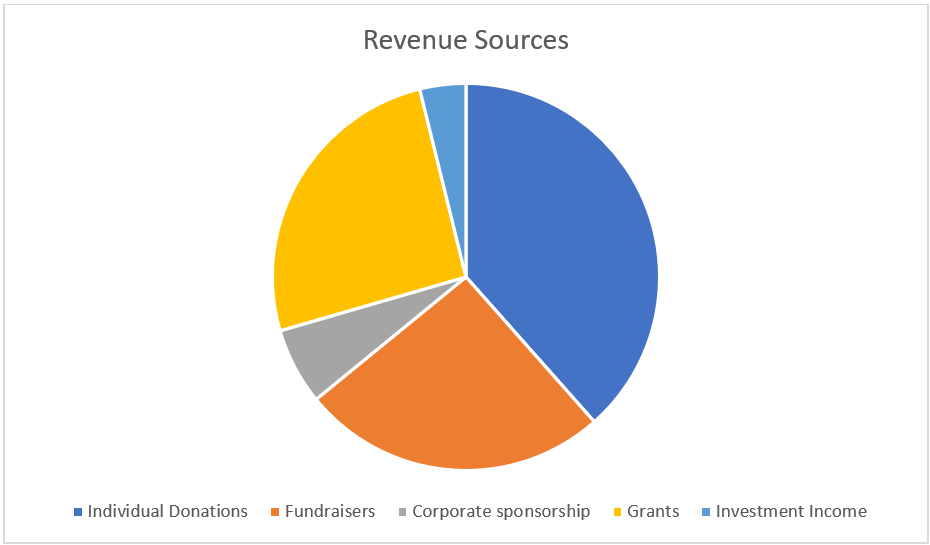As a nonprofit leader, you’re constantly searching for new revenue streams, and the more diversified your sources, the better. One critical source of funding is grants, which can be considered free funding, as they don’t need to be repaid. Typically provided by foundations, corporations, or government agencies, grants offer a significant opportunity for nonprofits. However, it is essential to understand the preparation required to secure and manage them effectively. Achieving nonprofit grant readiness is key to ensuring your organization is positioned for success, while also recognizing potential constraints and capitalizing on the benefits beyond financial donations.
Getting Grant-Ready: Essential Elements
The grant award process is extremely competitive and requires your nonprofit to have several elements in place to successfully compete. These should not be considered as a cost of grant writing. They should be considered as part of leading a successful nonprofit which also results in grant awards. Before pursuing grants as a revenue source, make sure you have the following:
- Mission and Vision: A compelling and succinct mission statement that resonates with stakeholders.
- Problem and Solution: Clearly define the community issue your nonprofit addresses and explain how your programs provide solutions.
- Defined Programs:
- Each program should have a specific budget.
- Include measurable outputs (e.g., the number of clients served annually).
- Track measurable outcomes (e.g., how your clients and community have been positively impacted).
- Annual Budget: Delineate administrative and program expenses clearly.
- Financial Statements: Generated monthly by a CPA and regularly compared against your budget.
- Annual Report: Use this to articulate growth, impact, and accomplishments over the past year.
- IRS 990 and Audit: Ensure these documents are updated and in compliance with requirements.
- Engaged Board of Directors:
- Conduct regular meetings with approved minutes.
- Approve and comply with policies on diversity, confidentiality, and conflict of interest.
- Review and approve the annual budget and monthly financials.
- Ensure diversity within your board and conduct annual performance reviews for your Executive Director.
Having these elements in place provides your grant writer with the necessary data to create competitive proposals, increasing your chances of success.
Your nonprofit leadership now needs to consider what are the optimum sources of revenue for your mission. Each nonprofit is going to have a different revenue mix based on its mission (ref. Ten Nonprofit Funding Models (ssir.org)). These ten nonprofit funding models give you an idea of the range of revenue sources and how dependent a given nonprofit will be upon certain sources more than others. For example, a nonprofit focused on local community needs is more likely to rely on individual donations and grants. On the other hand, a nonprofit providing essential services such as housing, human services, or education, where government funding is often allocated, will typically depend on government contracts.
This pie chart is an example of revenue sources and amounts raised by source for local community-based nonprofits. Looking ahead at your nonprofit’s successful grant writing, you need to consider what your annual grant funding goal should be. It is tempting to think that the sky is the limit for grant funding, knowing that it comes at minimal cost to the organization. But grants do have constraints that you should keep in mind as you set your annual revenue goals.

Managing Grant Constraints
While grants offer significant benefits, they also come with constraints that you must consider as part of your annual revenue planning. Here are some common restrictions:
- Reporting Requirements: Reporting can range from annual (foundation grants) to monthly (government grants), often requiring a robust database system maintained by your staff.
- Restricted Funds: Typically, grant funds must be used for the specific purposes outlined in your proposal.
- Inconsistent Funding Cycles: Grants may not be available every year. Some funders limit their awards to every two or three years, while others may dissolve entirely.
- Annual Grant Plan: You will need to track reporting deadlines, fund usage, and ensure you don’t receive more grants than your program expenses can support.
- Preference for Program Funding: Most grantmakers prioritize funding programs over operational expenses.
- Review of Financials: Granting agencies will assess your financial health to ensure you have diversified revenue sources and aren’t overly dependent on grants.
Navigating these constraints can be challenging, but you don’t have to do it alone. Our team is here to help you navigate the grant process, from crafting a winning proposal to ensuring compliance with reporting requirements. Contact us for expert support that simplifies the process and boosts your chances of success.
Beyond Funding: Additional Benefits of Grants
Grants can be a significant revenue source for your nonprofit, offering advantages that extend beyond financial support. These benefits should be considered along with the constraints. Grants need to be managed closely to take advantage of all those benefits. A few of these are:
- Increased Visibility: Successful grant execution will be promoted by the funding agency, raising awareness of your nonprofit.
- Community Support: Community stakeholders will note your grant successes and be more inclined to support your mission.
- Collaborative Opportunities: Granting agencies often offer other benefits beyond the donation to include partnering opportunities with other nonprofits they support.
- Additional Donations: Granting agencies may refer their donors who are particularly interested in your nonprofit to make a separate donation.
- Program Insights: With each grant your nonprofit writes, you will learn more about what you do or need to do from the questions asked on the grant application.
Strategizing for Sustainable Growth
While grant funding is an incredible resource, it is essential to approach it with a strategic mindset. The time and effort required for writing and managing grants is minimal compared to the rewards, but the real value lies in maintaining a sustainable and diverse funding strategy. By ensuring your nonprofit is fully grant-ready, understanding both the constraints and benefits of grant funding, and staying focused on your long-term goals, you can secure the necessary resources to make a lasting impact.
At Soukup Strategic Solutions, we provide expert guidance to help nonprofits prepare for grant success, from developing a tailored plan to crafting compelling proposals. Request a discovery call and learn how we can support your journey to sustainable growth and funding success. Together, we will help you secure the grants your nonprofit needs to thrive.






